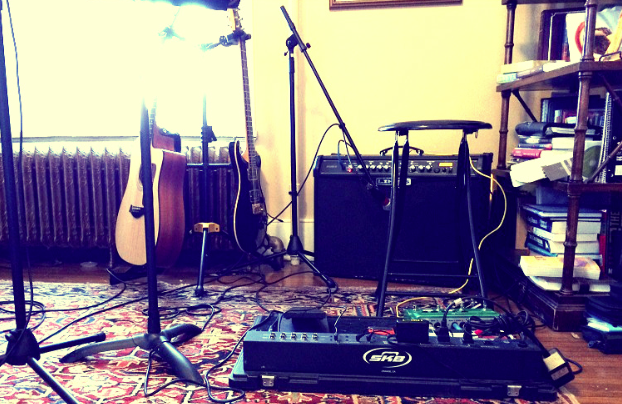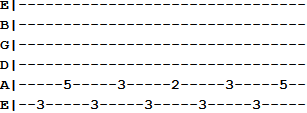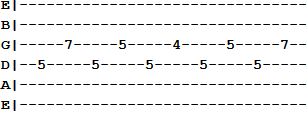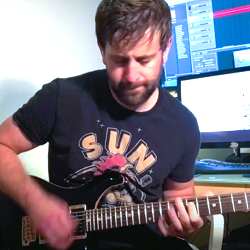Simple Ways to Do More with Power Chords

First, the purpose of this column is to help you do more with your power chord progressions.
If you think it’s over-simplified or over-complicated, then please consider the possibility that it’s simply mismatched with your skill level, before you comment.
We also must consider the context of the information. Power chords are fairly simple.
So all we want to do is expand their usefulness.
To begin, consider the most basic power chord form:

What exactly is this? A power chord, yes, but what’s it made up of?
01. Root Note
02. Perfect Fifth (Interval)
All the latest guitar news, interviews, lessons, reviews, deals and more, direct to your inbox!
The note at the third fret is our root (G), and the note at the fifth fret is our interval (D). We won’t discuss perfect fifth intervals here, but you can always read a more thorough explanation.
This chord can also be called a G5.
So what can we do with this chord? What’s the application?
Obvious to most is that we can move the shape, thus combining chords and creating progressions.
But if we know just a little bit about the makeup of this chord and the notes around it, we can manipulate the shape to get additional sounds and musical pieces, that can be used, without even having to break from our root note.
Let’s start simple.
01. Move the interval note.
Before you go moving the entire chord, the interval is moveable on its own. Try the following pattern:

The notes on the fifth string become your melody and the root G holds as your bass note. If you want the entire pattern to function as a melody over a bass line in the key of G, move it to a higher register where your root note doesn’t change.
For example:

Now, instead of having a stagnant power chord, you’ve got a method for breaking in and out of a melody.
In any situation where you’re playing a power chord, you can apply the same principle.
02. Build a redacted major or minor chord.
I don’t know if “redacted” is an official musical term, but what I mean is that you can use your power chord root with other intervals to create different chords.
So instead of just holding onto the perfect fifth for dear life, try some of these dyadic variations:

It’s just different intervals patched into your root note, but it’s simple and gives you some versatility to add in when you want a different flavor.
03. Adjust to different power chords.
The root and perfect fifth combo is the power chord in a sense, but it’s not the only one that can be useful.
Here are a few more dynamic replacements.

04. Build out some seventh chords.
Seventh chords sound bluesy, but the seventh interval can add intrigue to any power chord progression, without regard to genre.
Start with some simple major and minor seventh forms:

05. Leave out the root note.
If another instrument is handling the root note, like a bass or rhythm guitar, then you can free up that finger by omitting the root. Once you do, you can use it to add other tones and intervals to your chord.
Take the following G11, for example:

You can see that omitting the root G would make this chord much easier and would allow us to focus on adding more variety.

Does it technically change some of the chord’s theoretical properties? Sure.
But that’s not an issue if you understand what you’re doing and if your bass player has you covered.
The same method can be applied to the following barre chord:

Simply disregard the root G and just play the next three notes. You might have an easier time adding notes in the higher register, like the perfect fifth (D) that I highlighted in red.

Your Thoughts
My hope is that discussion about this material wouldn’t center on whether it’s too easy or too hard. It should be evident that such discrepancy is dependent on the skill of the individual and that this content isn’t challenging enough for some and too challenging for others.
On the other hand, if you have additions, constructive criticism, corrections or potentially intriguing observations about this material, let me know in the comments below or via Guitar World’s social media outposts.
Thanks for reading!
Image courtesy of Guitar Chalk Media.
Robert Kittleberger is the founder and editor of Guitar Chalk and Guitar Bargain. You can get in touch with him here, or via Twitter, Facebook and Google Plus.
Bobby is the founder of Guitar Chalk, and responsible for developing most of its content. He has worked with leading guitar industry companies including Sweetwater, Ultimate Guitar, Seymour Duncan, PRS, and many others.

